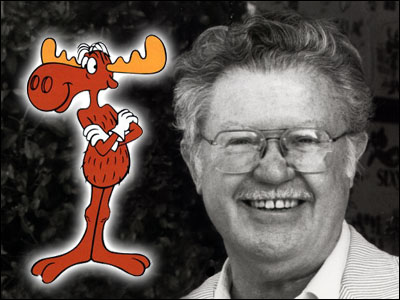My pal Bob Bergen is one of the top voiceover artists in the business and it isn't just because he's really good in front of a microphone. Obviously, that has a lot to do with it and none of what he or I have to say in this long, long post should obscure or trivialize that. But in the increasingly-competitive field of voiceover — both for animation and all the other areas — it ain't enough.
And before I go any further, let me add that the core principles that Bob wrote about in this piece he put on Facebook also apply to on-camera or on-stage acting, writing, drawing, singing…just about any creative job/artform. Especially the part about bewaring that which seems too good to be true.
Hi gang!
So, yesterday I had a conversation with a fellow vo professional whom I have the utmost respect. I'm keeping their identity private as it was a private conversion. But the issue they wanted my input on is rampant and frustrating, and it came up during the business of the business discussion on our recent VO Cruise.
For those of you who are interested in pursuing vo, or actively pursuing vo, I'm sure you have seen an internet trend with ads selling ideas such as, "You don't need acting training/You don't need to invest a lot of money/You don't need a broadcast quality home studio/You will make money," etc. Hogwash! If it looks too good to be true, it is!
These claims go against everything I stand for as a professional actor and coach. And, these claims go against the grain of whom I was chatting with yesterday, as they were just looking for some ideas/suggestions from me to address this and perhaps sway people from being taken advantage of.
NONE of this is new! It's just now. And due to the vastness of the internet, these charlatans reach far more than they did before social media.
When I first started studying vo in the late ‘70s, there were only a handful of workshops out there. And the community was small and tight. It was well understood by even the greenest of beginners, if a coach or acting teacher ever mentioned how to make money at vo, or how much money one can make at vo, shortcuts or how easy the whole thing is, you were to run fast in the opposite direction.
It was considered vulgar and unprofessional for anyone to discuss or guarantee an income upon completing a class. This is 100% true today as well. I myself cannot guarantee my own income, how could I ever guarantee a student's income? And you never, EVER took a class that offered a demo upon completion. You knew to stay away from "package deals." If everyone would be demo ready after a set number of classes, then everyone would be working!
Now, I took a very different slant on this issue than my fellow vo professional yesterday. I do not blame the charlatans. I blame those who seek them out or buy into their snake oil. One byproduct of the internet is the absence of merit, excellence and at times, common sense. People are looking to make money at vo, not to be great actors. Those who are great stand a better chance of working, but even a great actor does not always succeed. Hey, that's show biz!
People, consider the source! Caveat emptor! Wanna get vo career advice? Seek advice from those on a much larger boat than you, not from those on the same or smaller boat. I always had very high goals as a vo actor. I made it a point to only rub elbows with those who had the career I wanted. I studied with those who were the most respected by the top vo agents and casting directors. I invested and reinvested in my career, and still do. I wanted to be ahead of the herd, not amongst them. I pursued professional vo professionally.
Today, everyone at the top of the vo food chain is a mouse click away. There was no social media when I was starting out. So, how I did I rub elbows? I would befriend studio receptionists and ask to sit in lobbies in the event I could strike up a conversation with A-list vo actors, advertising producers/writers, etc. I would hang out in the parking lots of the top vo agents, just for the opportunity to bend the ears of the top actors in the industry.
People, you have no excuse today as everyone is at your fingertips on the machine you are reading this. You can listen to the top vo actor's demos on their agent's websites! Atlas, DPN, SBV, CESD, AVO, VOX, etc. No excuse to not know what makes a great vo demo! No excuse to not reach out to working actors to research who produced their demos.
Why are so many so attracted to the charlatans? Because the charlatans are just giving em what they want and want to hear. This is not just an issue with actors, this is an issue with people. Too many want to feel good, not do good. Too many want life easy. Too many want huge returns on the smallest of investments. Too many do not have the work ethic to strive for excellence, yet they want to be compensated for mediocrity. And then they complain/play the victim when things do not go their way.
Take ownership! Again, if it sounds too good to be true, it is. Strive to be a great actor, not a working actor. Wake up every day with the passion and drive to do more than everyone else, and then do even more. Check fast and cheap at the door. (Side note: it is far cheaper to pursue professional vo today than it was when I was starting out!! Gone are the days of snail mailing reel to reel demos, which cost me on average10 grand a year for decades, until the internet made marketing online free!)
Bottom line, as much as I appreciated the frustration from my fellow vo professional yesterday, I didn't have the same sympathy for those being taken advantage of. They/we are all responsible for our own business decisions.
We are responsible for our work ethic, or lack their of. We are responsible for vetting and seeing through the charlatans. If you want to play with the big boys, emulate them. Use commons sense if you are being sold a bill of goods that sound too good to be true. Consider the source and consider the source of those who fell for the BS. And consider the career path taken by THE most successful vo actors working today.
And if ya fell for any of this, check victimhood at the door. Own your choices and own your mistake. Look in the mirror and figure out what it is you did wrong and (or) fell for. Mistakes are only bad if repeated. I worked my ass off to get to where I am in my career, and I work even harder to stay here.
me again. That's one of the problems in the world today: People who are way too quick to believe what they want to hear. And I suppose there will always be those who see profit and/or power in telling that kind of person what they want to believe but the Internet has made it way too easy.
Like I said: What Bob wrote applies in a lot of areas besides voiceover. I think it's important for everyone to remember that if you want to make it in the real world, it's necessary to live in one.



